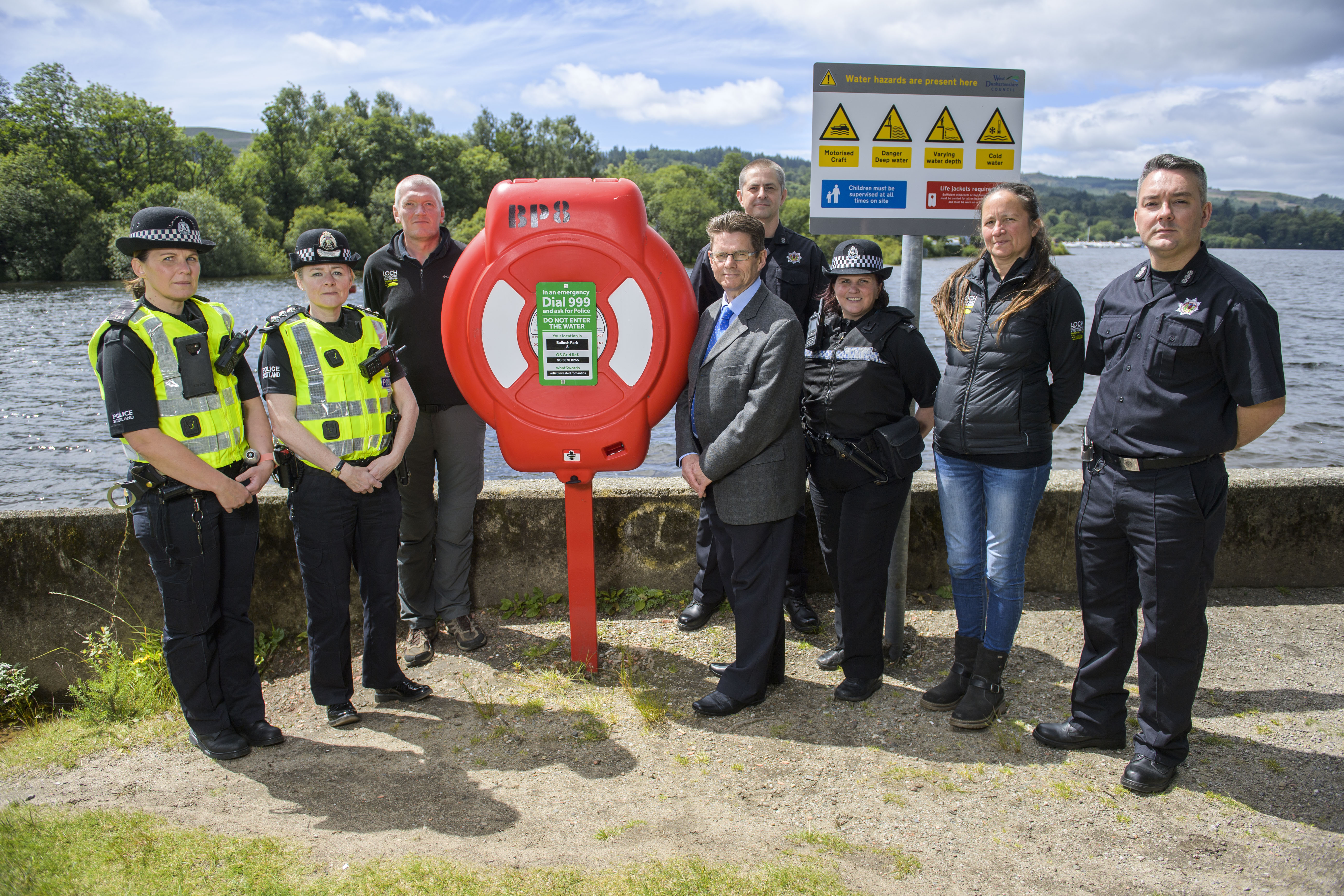Published 06 July 2022
A partnership approach to water safety pioneered in West Dunbartonshire is being rolled out across the country.
All local authorities will establish a Partnership Approach to Water Safety (PAWS) group that comprises council, public, emergency services and voluntary organisations, ensuring a cohesive community effort to enhance safety for local residents and visitors to the area.
This multi-agency collaboration model was devised by West Dunbartonshire’s Community Planning Partnership in 2021.
By gathering all agencies responsible for water safety – including Scottish Fire and Rescue, Police Scotland, Loch Lomond & The Trossachs National Park Authority, Scottish Canals and council officials – the forum has delivered a consistent approach with partners sharing information, resources and good practices to improve the provision of public rescue equipment, signage and increase public awareness via safety messaging.
PAWS stakeholders also conduct a debrief review following any notable water-related incident or safety concern to identify areas for improvement and awareness raising.
Now, as part of the Scottish Government’s Water Safety plan, all other local authorities are required to adopt the same partnership model first designed by West Dunbartonshire Community Planning’s Safe Delivery and Improvement Group.
Councillor Martin Rooney, chair of the West Dunbartonshire Community Planning Partnership said: “We are proud that the good work of the Partnership has been recognised by the Scottish Government and we hope that a nationwide rollout of the PAWS approach will save many lives.
“By committing to strong partnership working, sharing information, skills training and resources, all agencies not only support and learn from each other but also amplify their voice in the community with a shared consistent message that raises public awareness of the very real dangers of swimming in coastal and inland waters.”
Education and awareness raising has been a cornerstone of the West Dunbartonshire PAWS group’s remit since its inception 12 months ago.
In the past school term all secondary schools have worked with Youth Engagement Officers on delivering key messages about water safety in preparation for the summer holidays, when incidents of water tragedies most commonly occur.
West Dunbartonshire’s Education Health Support Officer sits on the national Water Safety Scotland Group and worked with a range of key partners to produce a water safety education programme and resource for primary and secondary schools.
To coincide with National Drowning Prevention Week, which took place on the 18 to 25 June 2022, these educational resources were shared with all schools to help equip children and young people with the right knowledge about the dangers in water and how to keep themselves safe when around water.
On the shores of Loch Lomond at Balloch Park and along the River Leven 25 additional public rescue equipment stations and location signs have been installed since 2021.
Leigh Hamilton, Ranger Service Manager at Loch Lomond & The Trossachs National Park Authority, said: “We know that there are real risk factors here in the lochs and water bodies of the National Park and everyone has a part to play in helping to prevent water fatalities.
“A programme of enhanced water safety measures has been rolled out by the National Park Authority ahead of this summer, including waterside responder training with Scottish Fire and Rescue for people working around loch shores, education materials and in-school sessions for young people and a programme of weekend water safety events at popular locations such as Balloch.
“However, the National Park covers vast waterside areas, only some of which are owned or managed by the Park Authority. So we are continuing to work with local authorities, landowners and businesses to identify popular water sites they own or manage where safety signage and equipment can be improved.”
Key safety information included in education programmes include the emphasis that even on warm days, the water is still very cold. Cold water shock is a real risk and can affect breathing and coordination. If you do get into trouble, try to keep calm, control your breathing then lie on your back, spread out your arms and legs and float to live.
For more water safety information visit the Scottish Fire and Rescue Service website https://www.firescotland.gov.uk/your-safety/outdoors/water-safety/
